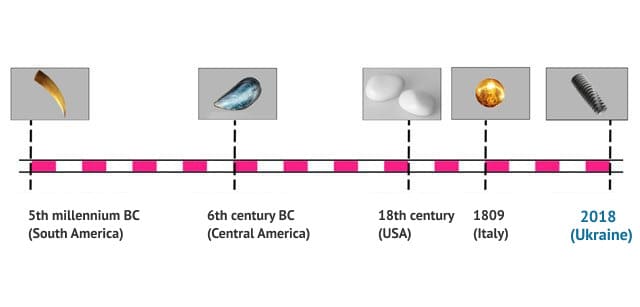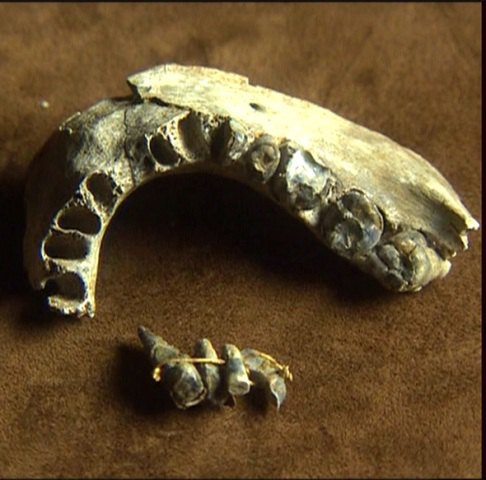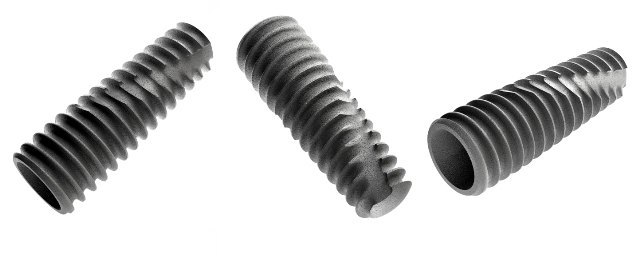How dental implantation developed: from wood and shell inserts to modern Bauer`s Implants

Dental implantation is a procedure that makes life easier for many modern people. Thanks to dental implants, they can feel comfortable and look good without being embarrassed by their smile.
Since now implantology has reached a high level of development, and most modern implant manufacturers produce a quality product, the implantation procedure in most cases is comfortable for patients and without unpleasant consequences.
However, this was not always the case.
The first attempts at implantation (5 thousand BC to VI century BC)
The first prototypes of dental implants were made from improvised, sometimes even the most unexpected materials.
The oldest known case of implantation attempts was recorded in the territory of modern Mexico. Archaeologists have discovered a human burial dating back to the 5th millennium BC. The man's upper teeth were badly sawn off. It is assumed that the fangs of animals (most likely a wolf or panther) were attached to them. However, scholars argue that this was not done for practical purposes, but for ceremonial purposes.
The first cases of dental implantation are also mentioned in Egyptian manuscripts dating back to the 2nd millennium BC. Then people used the teeth of animals, fragments of ivory or bones of other animals. The same methods were used in the 1st millennium BC. in America and Africa.

The Indians used stones that were inserted into an empty tooth socket. To do this, they were processed, giving the approximate shape of the tooth.
In the VI century BC. the Maya made implants from the shell of sea mussels. This is proved by the find discovered by archaeologists: a fragment of the lower jaw, where improvised "teeth" have been preserved in the holes. It is interesting that some of them were nevertheless integrated by the bone, that is, they “took root”.
Medieval period (X century - XVI century)
In 1790, Francisco Goya painted a painting of medieval themes called "The Hunt for Teeth." The painting depicted a woman trying to pull out the teeth of a hanged man on the gallows. True, as the author himself comments, the heroine of the picture needed the teeth not for implantation, but for performing witchcraft.
However, in the Middle Ages, it was common practice to use teeth removed from deceased people, and sometimes from living people. In England and colonial America, poor people sold their healthy teeth to the rich. The operations were performed by barbers.
In the 18th century, porcelain teeth appeared and became widespread in the United States. Compared to animal teeth, these implants caused less discomfort and did not emit an unpleasant odor. However, the fragility of porcelain prevented long-term use.
Before the introduction of the concept of "antiseptics" into science, infection of the surgical wound and rejection of implants almost always occurred.
Sometimes tightly coiled silk threads were used to hold the artificial teeth. But this method was not reliable, so the artificial teeth were removed before eating.
Development of implantology in the XIX-XX centuries

In the XIX-XX centuries, implantology made a significant step in its development.
In 1809, the scientist Maggiolo installed the first gold implant in place of the extracted tooth. However, since gold is not a bio-inert material, his patient experienced severe pain and inflammation.
Towards the end of the century, tin and celluloid implants were used. But still, these were only attempts to improve the aesthetic appearance of the patient, without purposeful scientific research.
It was only in the 20th century that the implant was first able to be implanted into the bone. It happened in 1938 at Harvard. The implant was made of a chromium-molybdenum-cobalt alloy and did not cause any comfort to the patient for almost 20 years, until the man's death.
In 1952, Professor Brannemark formulated the key conditions for the success of dental implantation: sterility, surface cleanliness, non-invasiveness, geometric equality of the bed and the design. Later, it was proposed to use a collapsible design of a screw implant, consisting of an intraosseous part and a support head (abutment) screwed to it.
A new stage in the development of implantology and prosthetics began in the 80s of the last century, when the phenomenon of osseointegration or fusion of bone tissue with an implant was discovered.
Bauer`s Implants - implants that combine the best achievements of modern implantation
Modern dental implants are the result of numerous developments, tests and trials by several generations of scientists. A high-quality product today is created on the basis of objective, fundamental scientific research.
Not so long ago, the ABM Technology plant in Dnipro patented a dental implant of its own design Helix (Straumann), produced under the Bauer`s Implants trademark. The model was developed by the design department of ABM Technology in conjunction with a European laboratory.
In the Helix (Straumann) line, all the advanced achievements of implantology were combined. Helix (Straumann) implants have a unique anti-rotational sulcus shape, which reduces axial loading and reduces excessive pressure on the bone during placement. The entire length of the implant is deeply threaded, which contributes to a good primary fixation during installation and reduces the pressure on the cortical layer of the bone. Also, Helix (Straumann) implants are highly hydrophilic, which guarantees sufficient blood flow. The single 22° conical prosthetic platform provides a hermetic implant-abutment connection, while the flattened apical portion prevents damage to the Schneider membrane.

“Modern implantation was preceded by numerous studies in this area, which led to the creation of an implant with a minimal risk of rejection by the body. Our implants have been developed taking into account all the trends of modern implantology.
We use titanium, because this material has been proven to be the best for osseointegration. The connection system of the abutment and the implant is conical, hexagon. This allows the abutment to sit as tightly as possible in the implant shaft and creates a minimum clearance to minimize any risks of bacteria ingress” said Vadim Voznyak, Production Director of ABM Technology.
Bauer`s Implants have been successfully tested in European laboratories and have confirmed their high quality and safety for customers.
“The ABM Technology plant does not stand still. The design department is developing, which works in conjunction with European specialists. ABM Technology develops new models, improves processes and introduces advanced technologies in the production of medical devices in order to produce only a high-quality product that is not inferior to the European one” said brand manager Anastasia Bardasova.
